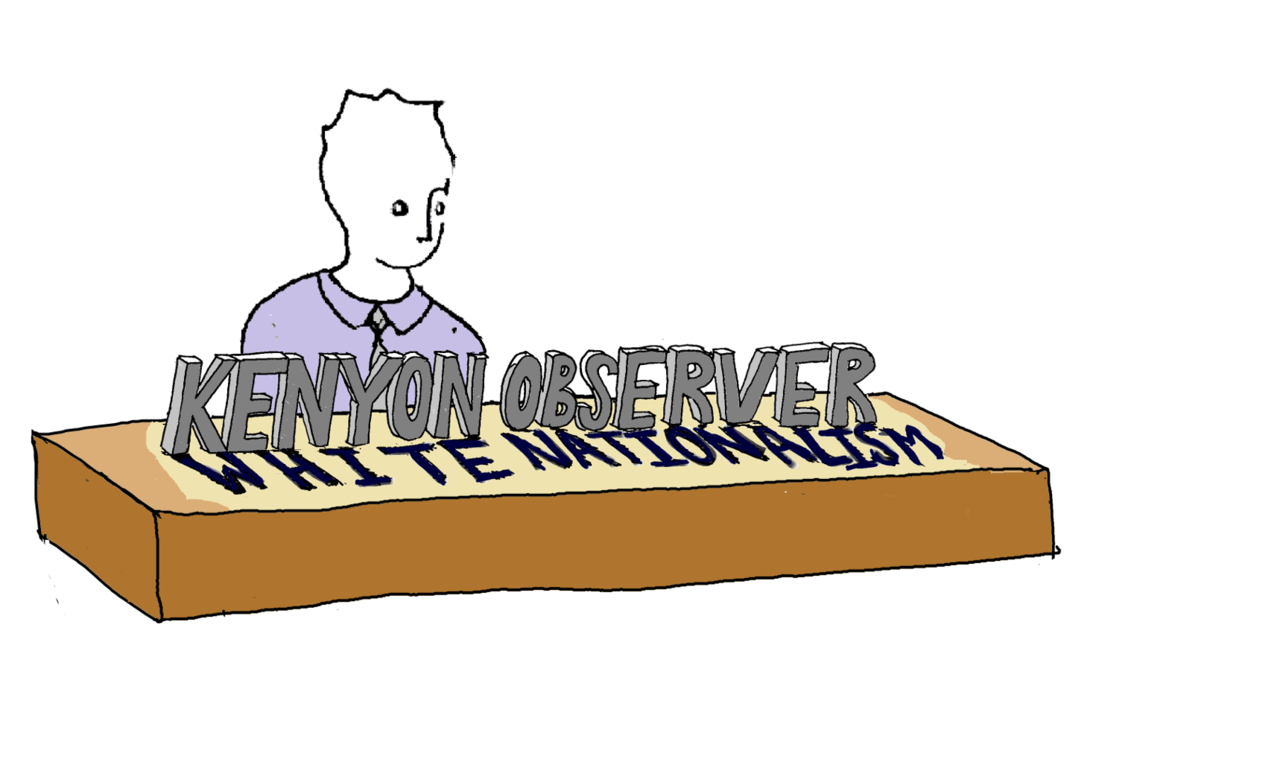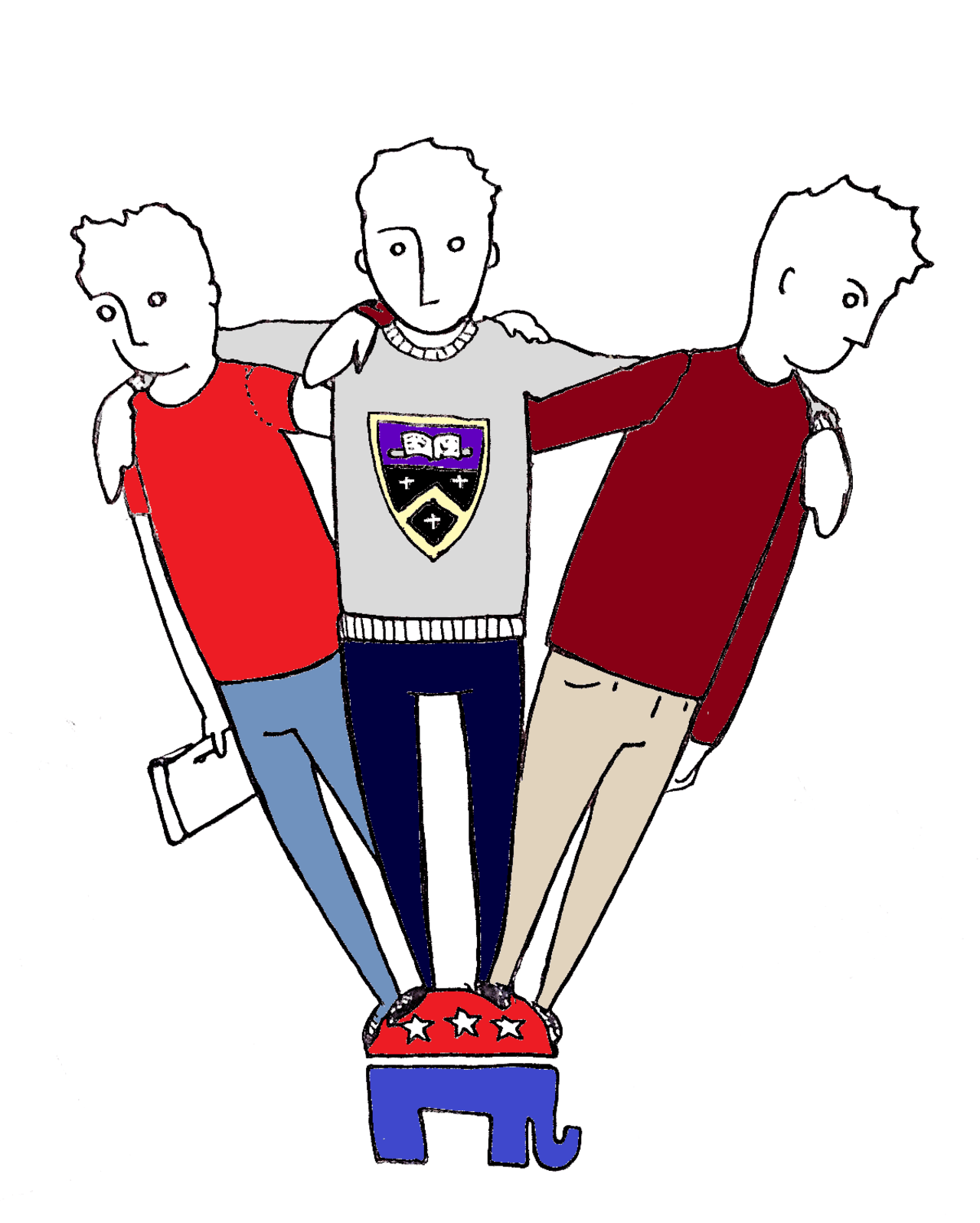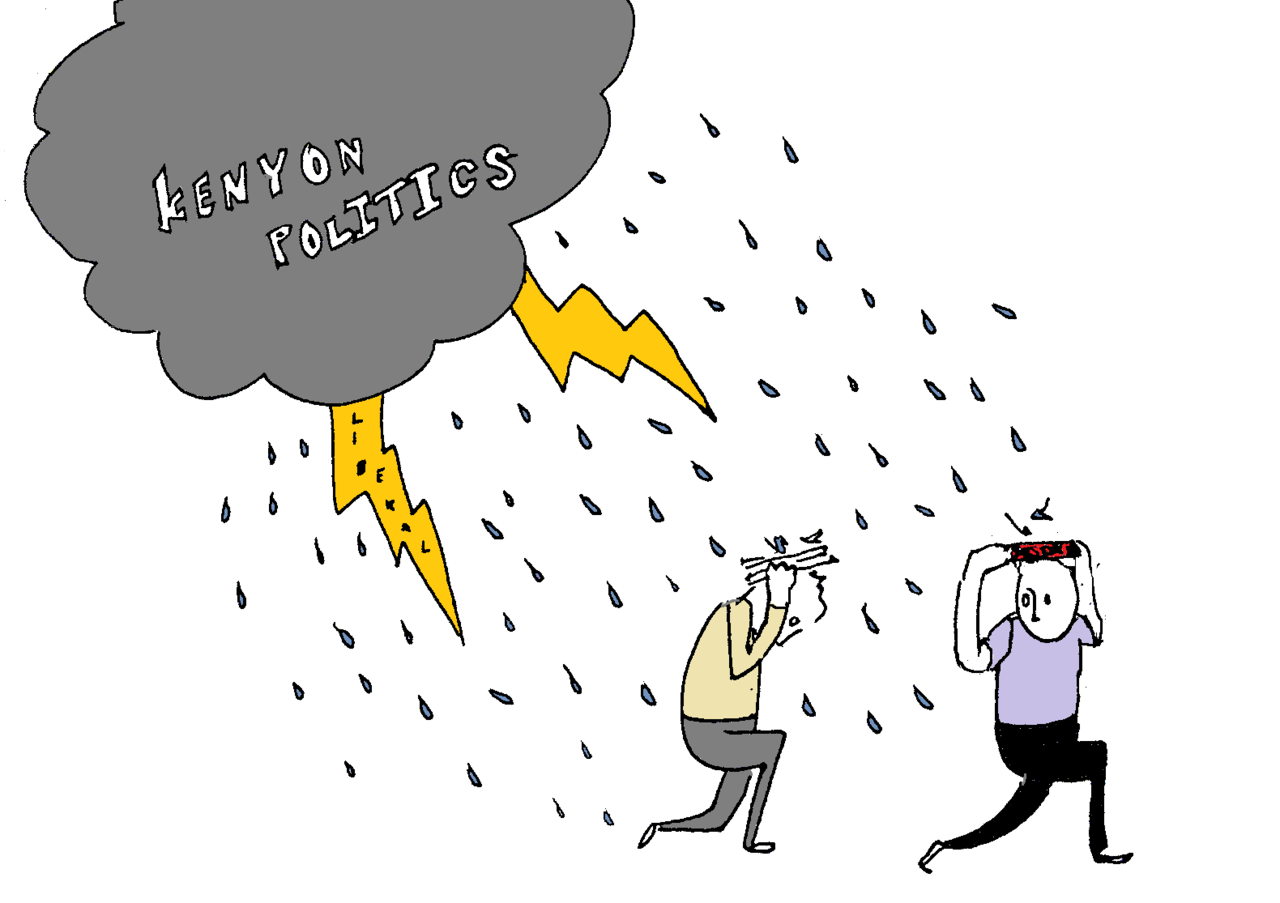When a white nationalist ran the Observer
Evan McLaren ’08 now directs Richard Spencer’s lobbying organization. How surprised should we, at Kenyon, be?
The Kenyon Observer was at loose ends. It was February of 2009, the middle of the semester, and Professor of Political Science Fred Baumann had just resigned from his role as the student magazine’s faculty advisor, no longer able to stand behind the ideas the journal was publishing. In those days, the Observer was dedicated to upholding conservative political opinions on campus, and Baumann, a professor of conservative leaning, had advised the publication since its founding in the late eighties. He guided the journal with a light hand and the belief that the writers were entitled to their own opinions, so long as they provided solid arguments. But enough was enough. This time, they had gone too far.
Baumann recalled a particular instance when one of the editors, Taylor Somers ’12, tried to bring a former British National Party leader, the anti-immigration and white ethno-state supporter Nick Griffin, to campus. But the final straw, everyone involved agreed, actually came before that; Somers had published an article entitled “Why Barack Obama is Wrong on Civil Rights” that called John McCain a “national socialist” (a Nazi) and pointed to his “intellectual retardation.”“I said that’s too nutty, I can’t do this,” Baumann said.
For several years after that, until two students reinvented it as a bipartisan magazine in 2011, there was no Observer. Given the time gap, the era of the magazine that immediately preceded its downfall has mostly faded from Kenyon’s collective memory. So have the people who worked on it.
Between 2007 and 2009, the publication was largely the brainchild of three students who, on the one hand, felt that their identities as white men were under attack on a liberal campus committed to multiculturalism and, on the other hand, found themselves unsatisfied with, and unrepresented by, the mainstream political right. If this two-pronged school of thought has resonances with our current political moment, the connection is not coincidental; last spring, one of these students, Evan McLaren ’08, became executive director of the National Policy Institute, the white nationalist lobbying group founded by Richard Spencer, whom the Southern Poverty Law Center credits with coining the term “alt-right.”
Some people from Kenyon expressed surprise after learning about McLaren’s appointment. Sarah Dolley ’01, a children’s librarian, said she felt disturbed when she first found out — enough so that she created an online fundraiser for an organization that helps refugees and invited other Kenyon students and alumni to donate. The fundraiser has raised more than $3,000 to date.
But most of those who knew McLaren on campus — those who took classes with him, who followed All-Student email chains, or who read the Observer during this period — said they were not surprised at all.

In August, shortly after the announcement of his role as executive director of the National Policy Institute, McLaren uploaded a video to YouTube called “Me versus some very sad people!” The 1:45-minute-long video shows him in a suit, sitting in front of the camera in what appears to be his home, responding to criticisms he allegedly received from members of the Pennsylvania Republican Party.
“I am being attacked because I am more serious, and more intelligent, and better spoken, and better looking, and more attractive than the people who are attacking me,” McLaren tells the camera. “I’m being attacked because I actually have things to say.”
McLaren helped Spencer plan the “Unite the Right” rallies that took place this past August in Charlottesville, Va., where white nationalists protested the removal of Confederate monuments. There, he marched by Spencer’s side.
As executive director of the National Policy Institute, he said, he is freeing Spencer from the busywork of running the organization to allow Spencer the time to be a public figure. It’s part of the Institute’s strategy for getting their white nationalist ideologies into the mainstream.
One day, he, Spencer, and their supporters hope to form a white state — a nation with a majority white population whose institutions explicitly privilege and celebrate white culture. But in the meantime, the organization is trying to get a website again. After the Charlottesville protests, Squarespace took down the Institute’s site for violating its terms of service.
In a phone interview with the Magazine, McLaren agreed describing him as a “white nationalist” is not unfair. Where the term is limited, McLaren thinks, is in its scope:
“Nationalism is just one form of collective organization and identity,” he said. “I wouldn’t let myself be limited in that way. There are other ideas out there about how white people might contemplate constituting a collective awareness or organization.”
McLaren first arrived on Kenyon’s campus in 2005 as a sophomore transfer student. His political leanings were already in flux; during his freshman year at Bowdoin College, a classmate of his, DeRay Mckesson, won a student government election. Mckesson is now a prominent civil rights activist associated with the Black Lives Matter movement. (He did not respond to requests for comment.)
“I remember thinking he was a really odd character,” McLaren said. “I didn’t connect very well with him.”
The student government election influenced him. He, of course, had not voted for Mckesson. The election confirmed for McLaren that he was in a vastly different ideological place than his peers, who were very liberal and dedicated to upholding multiculturalism on campus.
But when McLaren began writing for the Observer in 2006, he did not fit in with the mainstream Republican voice of the publication as a whole. For one thing, many of his early articles expressed criticisms of the Iraq War, and by implication, of most modern conservatives. He sought out thinkers who diverged from the norm. In the Observer’s June 2007 issue, McLaren interviewed Heather Mac Donald, a right-wing writer who came to campus this fall as a part of the Center for the Study of American Democracy’s confrence on free speech. Mac Donald has argued that police brutality against racial minorities and campus rape culture are myths. In the interview, McLaren and Mac Donald talk as peers; they seem to touch base about where they diverge from, and find themselves critical of, the mainstream right.
McLaren wasn’t the only one on campus thinking the way he was. Two years later, Tyler Stearns ’11 came to campus. Stearns had spoken with McLaren before his arrival at Kenyon, when they found camaraderie because of their similar libertarian-leaning ideologies. There weren’t many other students interested in the ideas they were drawn to.
Stearns and McLaren quickly became the backbone of the publication. The year after McLaren graduated and Stearns took over as editor-in-chief, Somers arrived as a first-year student. Somers also remembered speaking with Stearns through a Facebook group before getting to Kenyon, and though he did not attend Kenyon at the same time as McLaren, the two eventually met.
Stearns described the three of them — he, McLaren, and Somers — as a group of friends. For people with their political inclinations, “it was a very small world,” he said.
The connection between the three men is clear in their writing, which set the tone for the publication as a whole in those days. Often this involved a mockery of what they portrayed as the groupthink of the liberal majority on campus. In the opening remarks of the June 2007 issue, they made fun of paper signs that went up around campus arguing that menstrual products were unfairly expensive.

The articles were frequently misogynistic. Just as often, they were classist. In the January 2007 issue, McLaren wrote in opposition to a recent minimum wage increase in Ohio. Part of his argument rested on the claim that those we called poor were, in fact, not so. He wrote, “The ‘poor’ have a much greater obesity problem than the rest of the population, implying that undernourishment is less of an issue than some may believe.”
In all of this, there was rarely anything explicitly about race. McLaren touched on racial issues only once, in a criticism of a Barack Obama campaign speech, where he argued Obama failed to discuss affirmative action.
Baumann said he never heard McLaren talk about race, either. That would come later.
By McLaren’s senior year in 2008, he was the editor-in-chief of the Observer and a history major (although, according to the history department’s records, he only took classes in European and American history.) He sang in the Chamber Singers and often went to class wearing a dress shirt, a tie, and slacks, according to alumni. He would pay visits to Baumann in his office to debate political philosophy. And across campus, most students knew who he was.
Outside of the pages of the Observer, he stirred the pot in other ways. Most notable were the emails he sent. In those days, people often used the All-Student email distribution list to share their personal thoughts with campus, and McLaren took full advantage of this to broadcast his views. In May of 2008, one student sent out a long thought piece about the printing policy of the era, in which students paid a price per page printed, making certain classes more expensive than others.
McLaren responded with:
“The new printing policy reflects the Kenyon administration’s classism. Kenyon College is not doing enough to reach out to the working class. As a result of the new printing policy students in Gambier will be so hard up for money that they won’t be able to print their papers without begging. Kenyon College would allow something like this to happen. This sounds … implausible. Evan.”
“If you sent out anything even mildly political or controversial, he was in the replies playing Devil’s Advocate,” said one of McLaren’s former classmates, who wishes to remain anonymous due to fear of retaliation. “As soon as you saw his name pop up in your [all-student emails], you knew he was going to say something that made your blood boil.”
Arguing with McLaren was like getting into a political argument with a right-wing relative on Facebook, the former classmate said. She wasn’t surprised at McLaren’s position at the National Policy Institute.
“It wasn’t a stretch in the slightest,” she said.
Often, in his interview with the Magazine, McLaren spoke of his student self as though he was on an ideological trajectory, moving toward where he is now. When talking about how he pulled the Observer away from its mainstream roots, he said, “I didn’t really understand why, at the time. I didn’t understand the things that put me on a different track — [me] and the people who were working at the Observer while I was there. But my interests definitely lay elsewhere.” Of his debates with Baumann, he said, “I think he could sense the direction in which I was traveling.” Baumann said that while he thought McLaren was extreme back then, he did not know how extreme his former student would become.
McLaren said that as a student, Somers was already, ideologically speaking, where McLaren is now. Somers agreed with this assessment. “I would say I was probably close to where he ended up, at least in sophomore year or so,” he said.
The year after McLaren graduated, Somers tried to bring Nick Griffin, the British fascist, to campus. Somebody had reached out to him over Facebook using a pseudonym and asked whether he wanted to sponsor Griffin’s talk. Somers agreed.
“I was aware of him and, at the time, I was somewhat sympathetic to some of the messages he was putting out,” Somers said.
He organized the event. Very quickly, he received a lot of backlash, not only from his peers at Kenyon, but also from people in the surrounding areas who opposed Griffin’s fascist ideology. The response caused Somers to cancel the talk.
That was when he started receiving threats from Griffin’s supporters against his physical well-being. He was nineteen at the time. It was, he said, “a difficult thing to go through.”
But the Griffin incident also caused Somers to reflect on his beliefs. He’d felt criticized as a white male at Kenyon; because of that, Somers said, “I adopted, more or less ironically, reactionary views. And if you do that enough, ulwtimately you end up kind of believing it. And really believing it … It can lead to things like white nationalism, for example.”
After the Griffin incident, Somers said, he started questioning where he had gone wrong. He now works at a financial services nonprofit, helping people manage debt. In the past election, he said, he supported Bernie Sanders and Jill Stein.
Reflecting on his old beliefs, he said, “The thing is, it’s so strange, because it seems to mirror so much of what I hear and read about the alt right these days.”
McLaren met Spencer toward the end of his senior year at Kenyon. Spencer was just one of many figures McLaren was introduced to through the political scientist Paul Gottfried, whom Tablet Magazine, a Jewish culture website, has dubbed “The alt-right’s Jewish godfather” for his influence on Spencer. In his student days, McLaren had been a follower of Gottfried’s philosophy. One day, he visited Gottfried’s office where the professor worked, at Elizabethtown College in Pennsylvania not far from McLaren’s hometown. He eventually invited Gottfried to speak at Kenyon.
After graduation, McLaren wrote articles under pseudonyms for various outlets Spencer headed.
The summer after he graduated, he published a since-deleted blog post for Taki’s Magazine, a blog Spencer used to run. “Not everyone needs to be convinced that white nationalism is the Right of the future,” he writes. “I’m certainly not.”
The following year, when Somers published the article that called McCain a Nazi — the bulk of which was actually not about McCain at all, but presenting an argument about how equal pay is a bad idea, because women and minorities simply don’t work hard enough — McLaren responded with a letter to the editors. In it, he began by criticizing the McCain claim. (Verdict: not a Nazi.)
More interesting, though, is what McLaren said next. “What I dislike about Somers’ article the most, however,” McLaren wrote, “is its servile attempt to construct an argument that will appeal to militant anti-racists.”
Somers, he continued, tried too hard to maintain that the races were equal; the implication was that they were not.
Stearns’ political leanings have not changed much since his time at Kenyon. He now works in healthcare. McLaren’s trajectory has not surprised Stearns, who said he still admires McLaren greatly. “Without Kenyon, I would not have views that I have today,” Stearns said. “Without Evan, I wouldn’t have the views I have today.”
Somers, on the other hand, offered words of advice to white men — or anyone else — who might feel alienated from the dominant campus culture.
“The thing you want to aim for is just what is true,” he said. “People may use falsehood or false accusations to accuse you in some way or another. It doesn’t mean necessarily that the mirror opposite of whatever they’re saying is necessarily what’s true. You know, the important thing is not being on one side, or being in one particular tribe, in one sense or another, ideological or otherwise, but trying to really aim for what is true.”
He thought for a moment, then added, “You know, I’m not involved in this sort of right-wing stuff. But yeah, I mean, I guess you know: Evan kind of followed that, obviously, further down that road.”

